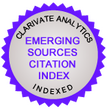THE CHINESE ARE COMING! WHAT TO DO WITH MY MARKETI NG MIX? THE CASE OF RAMADHES & CIA LTDA.
DOI:
https://doi.org/10.13058/raep.2014.v15n1.46Keywords:
marketing mix, positioning, brand.Abstract
This case, based on real facts, describes the market situation experienced by Rodrigo Ramadhes, the director of Ramadhes & Cia Ltda., a company based in Minas Gerais that has been operating for more than 60 years. It is one of the leading producers of belts, backpacks and handbags in South America. During the 2000s, the company developed the Madhes belt line as part of its range of accessories, which became its main product. Much of this success was credited to the marketing mix policies, which combined the price, distribution channel and a mixture of communication with brand concept based on functional attributes and benefits. According of the marketing mix, the scenario was favorable for the Madhes line, but growing gdp and increasing penetration of Chinese products, including belts, concerned Rodrigo Ramadhes, who began to consider transferring the company’s industrial production from Minas Gerais to China in pursuit of a greater competitive edge. He constantly reflected on the possible implications of such a move on the company’s marketing mix, despite the current situation being favorable, solid and promising in market terms.
Downloads
Downloads
Published
How to Cite
Issue
Section
License
By publishing a manuscript in the journal Administração: Ensino e Pesquisa (RAEP), the authors declare that the work is of their exclusive authorship and therefore assume full responsibility for its content. The authors grant RAEP a non-exclusive rights license to use the work in the following ways:
(1) Sell and / or distribute the work in hard copies or electronic format.
(2) Distribute parts of the work as a whole to promote the journal through the internet and other digital and printed media.
(3) Record and reproduce the work in any format, including digital media.
Authors and readers are permitted to share the material, use it in classes, for presentations and also for other purposes, and to create new knowledge based on any RAEP publication, as long as the due credit is attributed to the original work and the respective author(s), through citations, references, and other means.
The journal adopts preventive measures to identify plagiarism using software designed for this purpose.
RAEP does not charge authors for the article submission nor for the publishing of approved articles.
In line with the journal's policies, each published article will be given a Creative Commons CC-BY 4.0 license.










